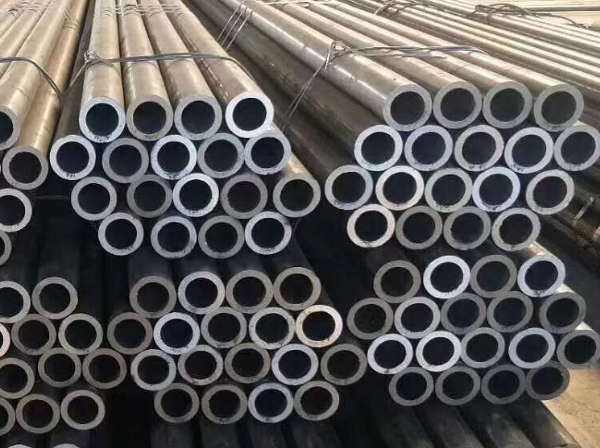Difference between seamless steel pipe and welded steel pipe:
1) Different production process
Seamless steel pipe: A steel pipe that is perforated from a whole round steel and has no welds on the surface.
Welded steel pipe: a steel pipe with seams on the surface that is formed by bending and deforming a steel strip or steel plate into a circular, square or other shape and then welded.
2) Different feature
Seamless steel pipe: the maximum diameter is 650mm, and the minimum diameter is 0.3mm. Depending on the application, there are thick-walled and thin-walled pipes.
Welded steel pipe: When the T-shaped welded steel pipe contains Ni, it has strong corrosion resistance in an acidic environment. In an environment containing sulfuric acid or hydrochloric acid, the higher the Ni content in the T-shaped welded steel pipe, the stronger the corrosion resistance. Under normal circumstances, only adding Cr to the T-shaped welded steel pipe can prevent the phenomenon of corrosion.

3) Different price
The price of seamless steel pipe is generally higher than that of welded steel pipe.
4) Different pressure bearing capacity
The pressure resistance of seamless steel pipes is higher than that of welded steel pipes. Welded pipes are generally around 10MPa. Now welded pipes are seamless.
5) Different uses
Seamless steel pipe: Seamless steel pipe is mainly used as petroleum geological drilling pipe, cracking pipe for petrochemical industry, boiler pipe, bearing pipe and high-precision structural steel pipe for automobile, tractor and aviation.
Welded steel pipes:
Electric welded steel pipes are used in oil drilling and machinery manufacturing, etc.; furnace welded pipes can be used as water and gas pipes, etc.,
large-diameter straight seam welded pipes are used for high-pressure oil and gas transportation, etc.; spiral welded pipes are used for oil and gas transportation, pipe piles, bridge piers, etc.


